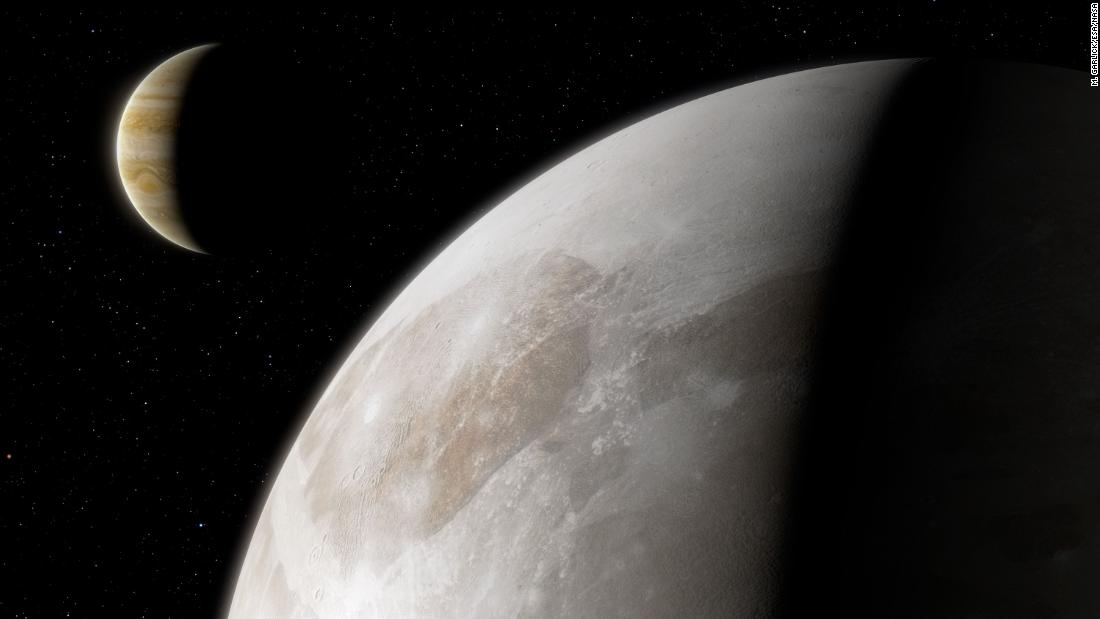
Astronomers uncovered this water vapor while using a combination of new and archival observations from Hubble.
A study on their findings published Monday in the journal Nature Astronomy.Previous research has suggested that Ganymede -- the ninth-largest object in our solar system -- contains more water than all of Earth's oceans put together, although the moon is 2.4 times smaller than our planet.But Ganymede is so cold, with temperatures that can reach negative 300 degrees Fahrenheit (-184 degrees Celsius), that the surface is a frozen water ice shell.Understanding more about Ganymede can help researchers learn more about how gas giants like Jupiter and their moons form and evolve over time -- and whether icy moons, which are scattered across our solar system, are habitable environments where life can find a way.